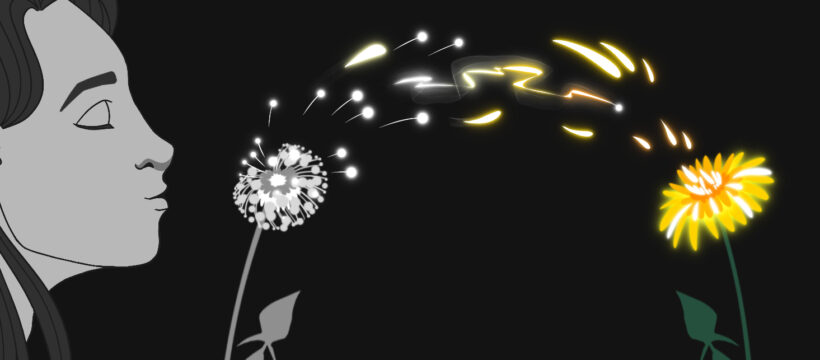Time evolution of a single photon reversed with a universal rewinding protocol and a quantum switch.
Vienna, Austria, 07. February 2023: In the world around us processes appear to follow a certain time-direction: dandelions eventually turn into blowballs. However, the quantum realm does not play by the same rules. Physicists from the University of Vienna and IQOQI Vienna have now shown that for certain quantum systems the time-direction of processes can be reversed. This demonstration of a so-called rewinding protocol has been published in the Journal „Optica“.
Everyday life is full of changes that are well understood, yet practically impossible to reverse, for example, the metamorphosis of a dandelion into a blowball. However, one could imagine undoing this transformation, step by step, if one knew precisely how each molecule in the plant moved in time.
In the quantum realm the problem gets even trickier: one of the core principles of quantum physics is that simply observing a system causes it to change. This makes it impossible, even in principle, to track a system’s change in time and reverse the process.
However, at the same time, the laws of quantum mechanics also open up new possibilities such as universal rewinding protocols. These allow for reversing changes in a quantum system without knowing what they were.
In a collaboration between the University of Vienna and IQOQI Vienna, experimental physicists headed by Philip Walther have successfully implemented such a universal rewinding protocol developed by theoretical physicists led by Miguel Navascués.
Combining this novel theoretical protocol with an intricate optical setup, the group showed that it is indeed possible to revert changes of a quantum system. For this, they employed ultra-fast optical fibre components and free-space interferometers arranged as a quantum switch. They successfully reversed the time evolution of a single photon without knowing how it changed in time, or even what its initial and final states were.
„Remarkably, this protocol does not even require the nature of the interactions with the quantum system to be known“, says Peter Schiansky, first author of the publication in „Optica“.
Their universal rewinding protocol is optimally efficient in its runtime and can be extended to succeed with arbitrarily high probability.
The proof that rewinding protocols exist in this general form and that they are technically feasible contributes to our understanding of fundamental quantum mechanics. In the future, these protocols could become a useful tool in quantum information technologies.
Original publication:
Schiansky, P., Strömberg, T., Trillo, D., Saggio, V., Dive, B., Navascués, M. & Walther, P., Demonstration of universal time-reversal for qubit processes, Optica, Vol. 10, Issue 2, pp 200-205 (2023), DOI:10.1364/OPTICA.469109
Contact information:
Univ.-Prof. Dipl.-Ing. Dr. Philip Walther
Quantum Optics, Quantum Nanophysics and Quantum Information
University of Vienna
1090 Vienna, Austria, Boltzmanngasse 5
T +43-1-4277-72560
M +43-664-60277-72560
Press contact:
Mag. Alexandra Frey
Press and Information Office of the University of Vienna
Universitätsring 1, 1010 Vienna
T +43-1-4277-175 33
International Distribution:
Dr. Barbara Bauder
PR&D – Public Relations for Research & Education
Kollersteig 68, 3400 Klosterneuburg
M +43-664-1576-350
Image caption:
Reversing a system’s time evolution can be tricky enough when you know how the system looked like initially and how it evolved. Yet, physicists found out that the evolution of a quantum system can be reversed without this knowledge, even without needing to know how exactly to interact with the system.
Image rights: Christine Schiansky, @freowynart
genuinely curious. Since 1365.
The University of Vienna is one of the oldest and largest universities in Europe. This makes the University of Vienna Austria’s largest research and education institution: Around 7,500 interconnected academics work at 20 faculties and centres on new solutions, thus contributing significantly to the further development of society. The University of Vienna cooperates with the business world, culture and society. The aim of discovering innovations with genuine curiosity unites researchers, students and lecturers. Approximately 10,000 students graduate from one of the University of Vienna’s 184 degree programmes every year. The University prepares them for a professional career and encourages critical thinking and self-determined decision-making.
UNIVERSITÄT WIEN | Universitätsring 1 | 1010 Wien | T +43-1-4277-0 | www.univie.ac.at

